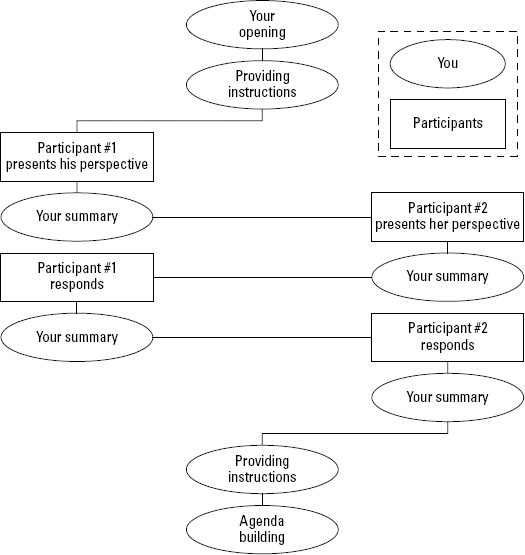Chapter 7. Starting a Mediation Meeting and Creating a Working Agenda
In This Chapter
Kicking off a mediation meeting
Listening to employees' perspectives
Summarizing, reflecting, and reframing
Creating a road map for discussion
After you meet privately with individuals in conflict, you have the option to facilitate a discussion (or mediation) between the two. The way you set up the meeting room is important, so look for tips on how to do that in Chapter 6. When you're ready to bring the participants in, take a deep breath and steady yourself so you can be the neutral facilitator they need.
In this chapter, I give you skills and techniques to direct the conversation in a meaningful way as well as step-by-step instructions on how to demonstrate your neutrality by reflecting emotions and issues back to the parties. I also share tips on ordering and structuring a productive agenda.
Unsure how all this fits together? Not to worry — the flowchart in Figure 7-1 will help you keep track of where you're at in the process and what the next steps should look like.

Figure 7-1. Process flowchart
Facilitating Effectively
Mediating a discussion is a lot more than just positioning yourself between two people who aren't getting along and blocking verbal punches. There's an art to reading the situation in a way that puts you in the facilitator's seat but allows you enough involvement in the discussion to move ...
Get Conflict Resolution at Work for Dummies® now with the O’Reilly learning platform.
O’Reilly members experience books, live events, courses curated by job role, and more from O’Reilly and nearly 200 top publishers.

